Wax carving advent calendars?Wax carving advent calendars?
Turquoise wax
Turquoise wax isn’t as easily available as some of the other wax colors. But when you find a supplier that sells it, you can get this wax in almost all shapes and sizes.
So what’s it like to work with turquoise wax?
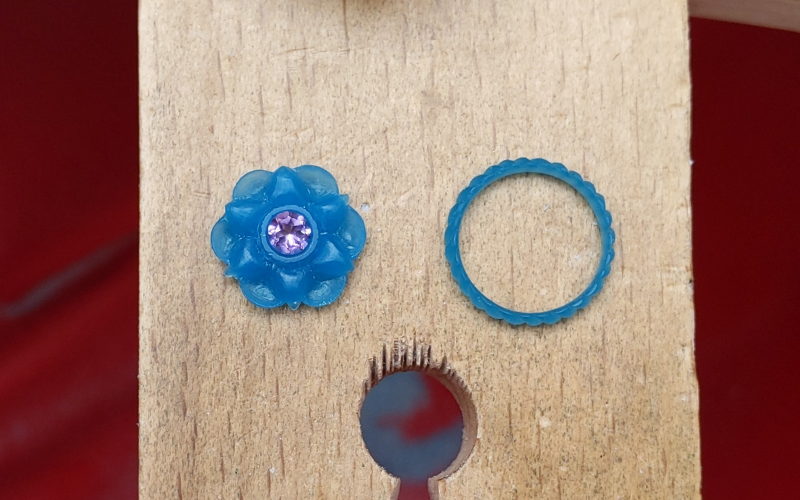
For the wax color comparison series, I make some pieces with each wax color. I use all the common tools and techniques and describe how easy/difficult they were. Keep reading along and find the wax that best suits your making style.
Curious about the other colors? Read about green wax, purple wax, gold wax, Wolf gold wax, blue wax and orange wax.
Piercing
I used a regular saw blade for this. With a wax blade, all colors would end up with the same verdict: quick and easy. Besides, you want to use a regular blade for precision work.
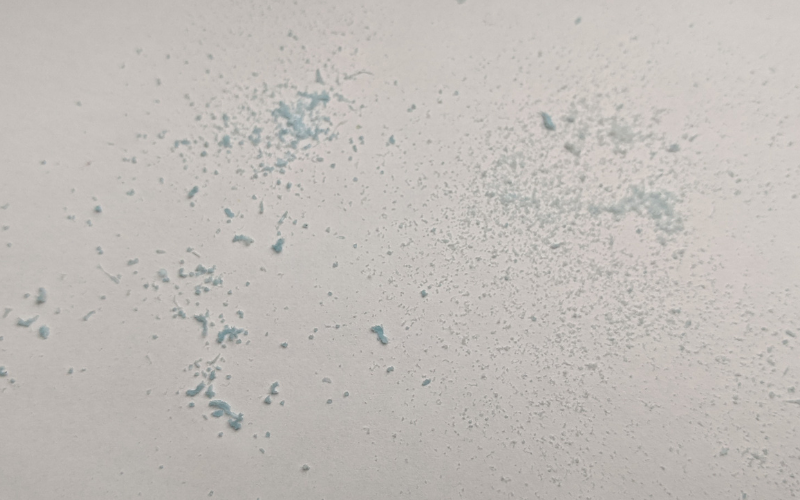
Thick pieces (ring tube etc): piercing is slow. The dust comes out as powder in the beginning, but starts to clump together the deeper you get into the wax. When the dust starts to clump, the piercing gets a bit easier.
Thin pieces: piercing thin pieces is so much easier! It’s quick. But you do have to wipe away the wax dust from the line to see what you’re doing.
Hand files
Big sections (side of a ring etc): filing big sections is not really difficult, it just takes a while. The wax doesn’t feel hard, but you’re only removing small amounts of wax over a big surface. The wax you’re removing is dustlike in texture. Keep going and you get a flat smooth surface.
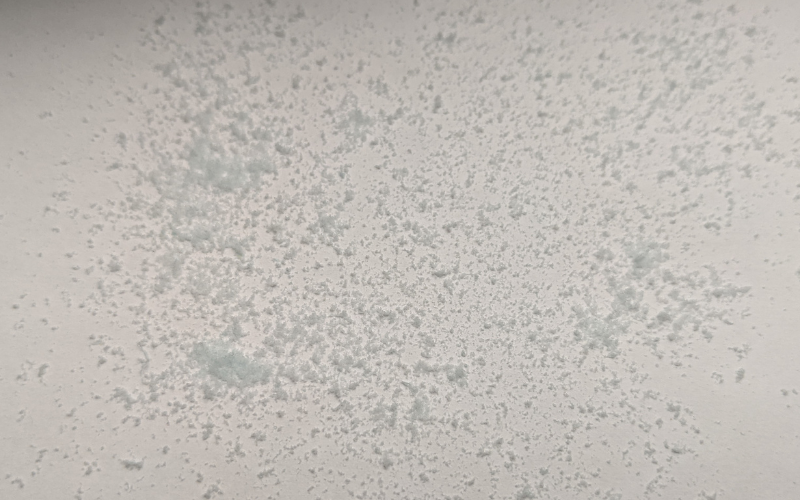
Upside? The fine dust doesn’t clog your file at all.
Small sections: filing small sections is a lot easier again. You make quick progress and see results immediately. The wax dust collects on top of your file, without going in between the teeth. You can easily brush it off with your hand.
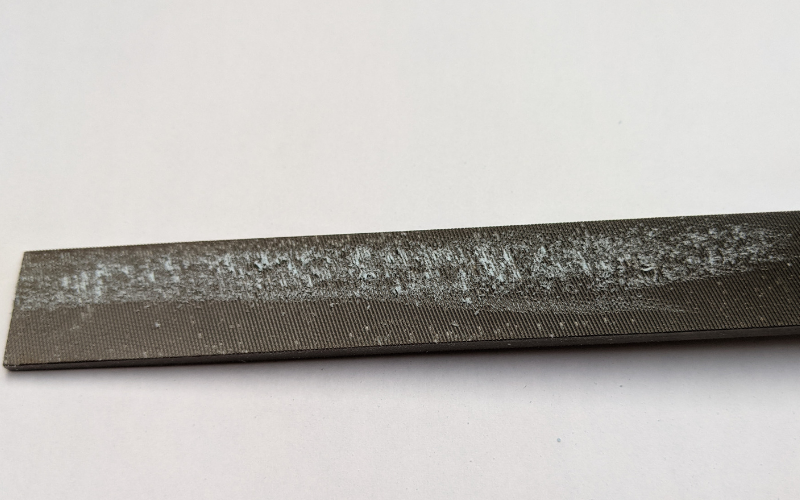
Needle files
Needle files work perfectly on turquoise wax. The wax feels soft under your files. Filing and shaping takes no time at all!
The downside of this softness is that it’s easy to slip with your file and dig into the wax.
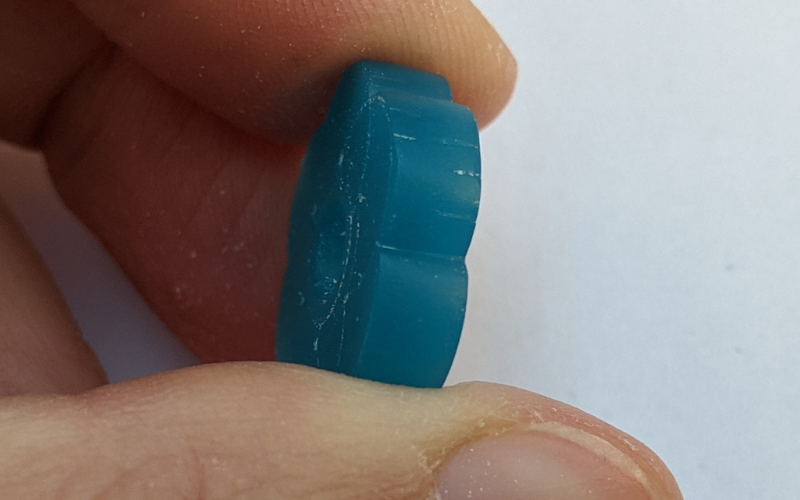
The best way to prevent this is by only using a small amount of pressure. The harder you press down on your file the quicker it digs in. And with a lot of pressure it digs in deep!
When there’s less pressure, the file doesn’t dig in as quickly and often. And really, the wax files so easily! You see quick results, even with minimal pressure.
The wax does properly clog your files though.
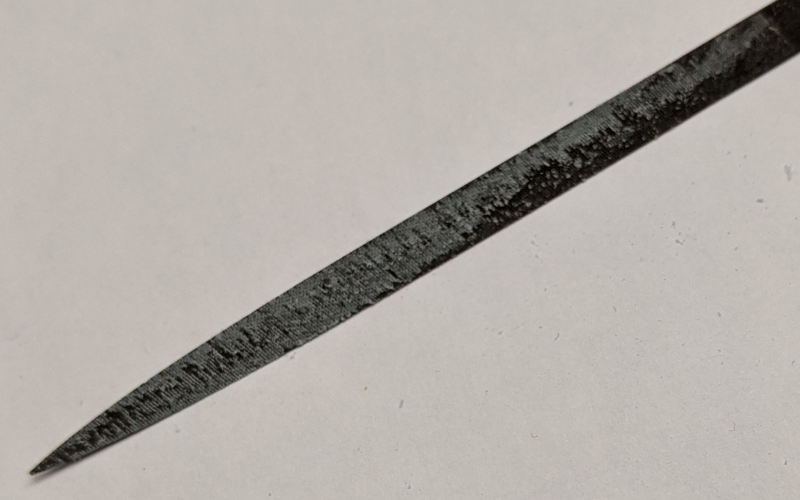
Brushing the file with your hand or a toothbrush gets rid of the majority of the wax, but not all.
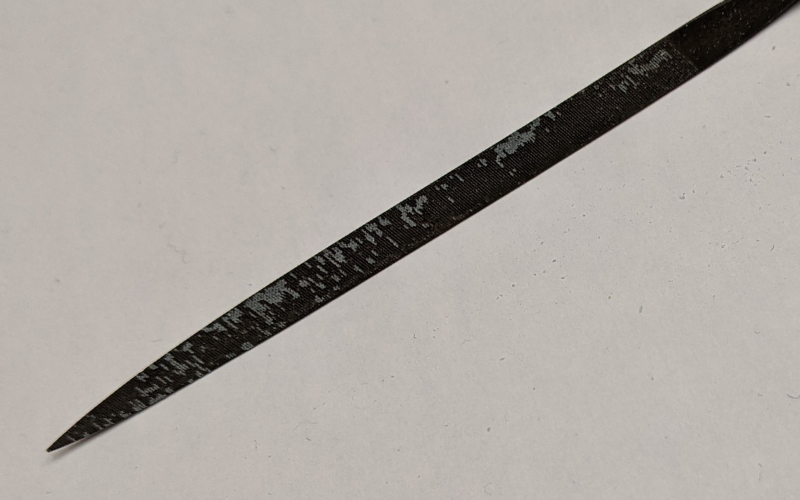
You really have to get in between the teeth of the file with your nails or a piece of wood to remove all the wax.
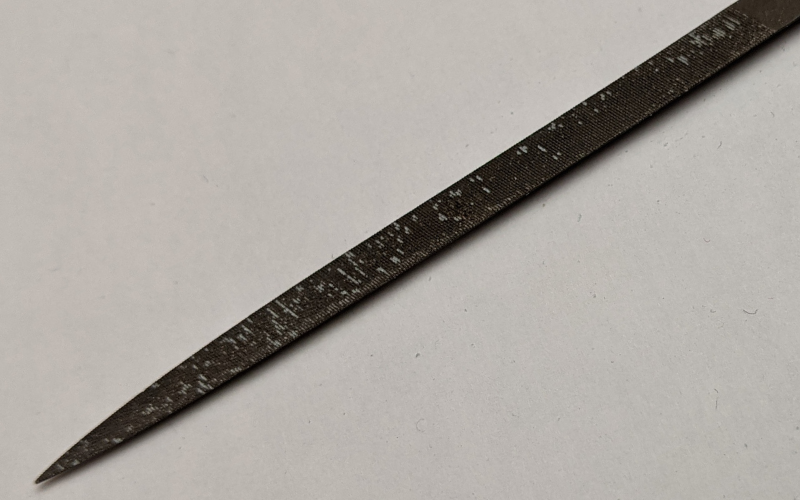
Carving tools
Carving tools work perfectly as well. The wax feels soft under the carving tools and it’s so easy to shape it. There isn’t a lot of resistance in the wax. You can use the carving tools for refining your shape or detailing. AND you can start a carving from a flat piece!
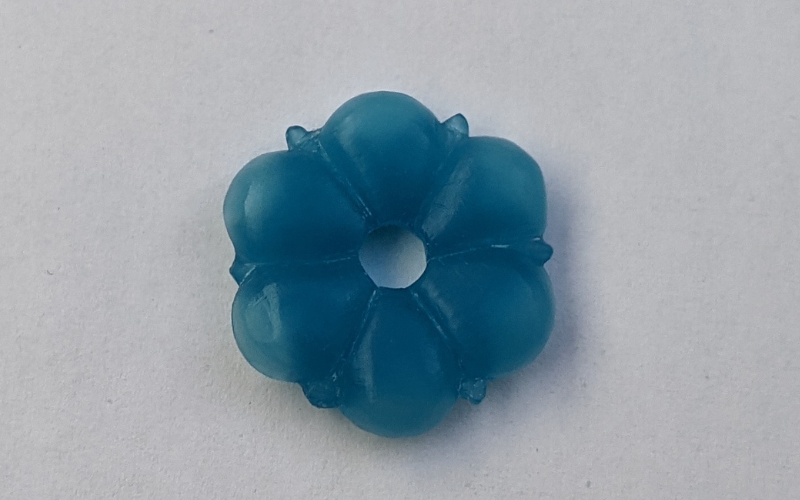
Same as with the needle files, you have to be careful not to slip and dig. But it's totally doable to get a very clean and smooth surface with just your carving tools.
Melting
Repairing: The wax melts quickly and transfers easily from the heat source to your piece of wax. Really, it tries to get away from the heat source to a cold piece of wax. If you need a bigger blob, you have to build it up in stages. If there’s too much melted wax on your wax pen, it just falls off.
You can get a good sized blob in a few goes on your piece.
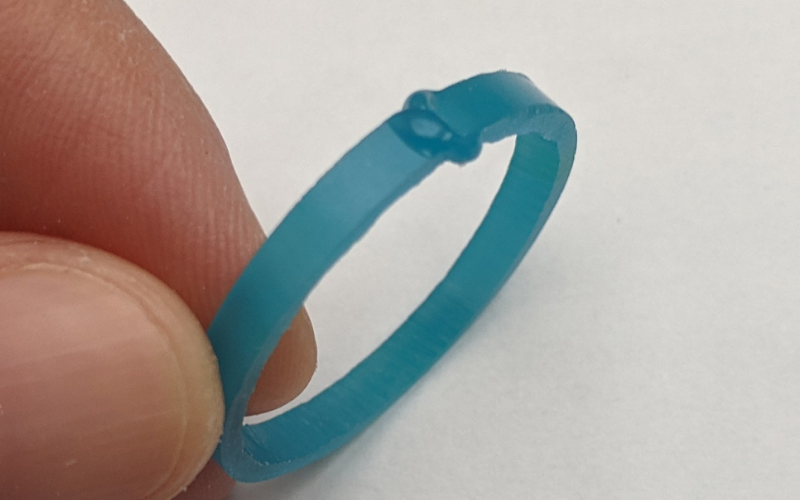
And it files away easily and cleanly.
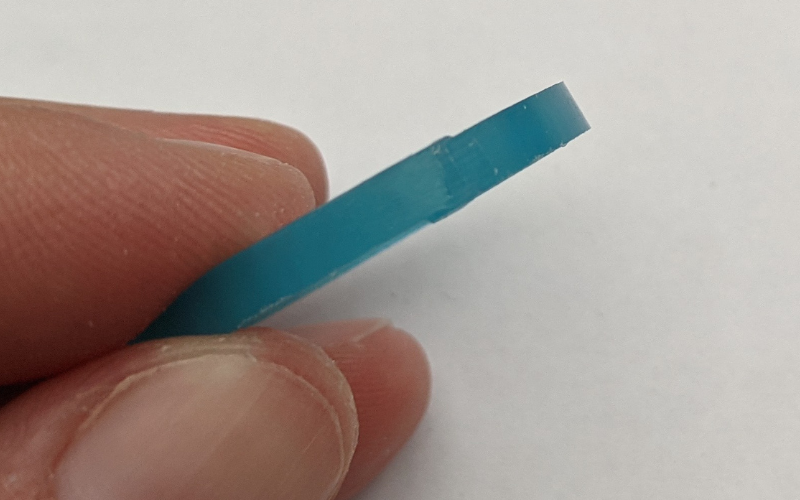
Remelting scraps: scraps melt quickly and evenly. You end up with a workable piece of wax again.
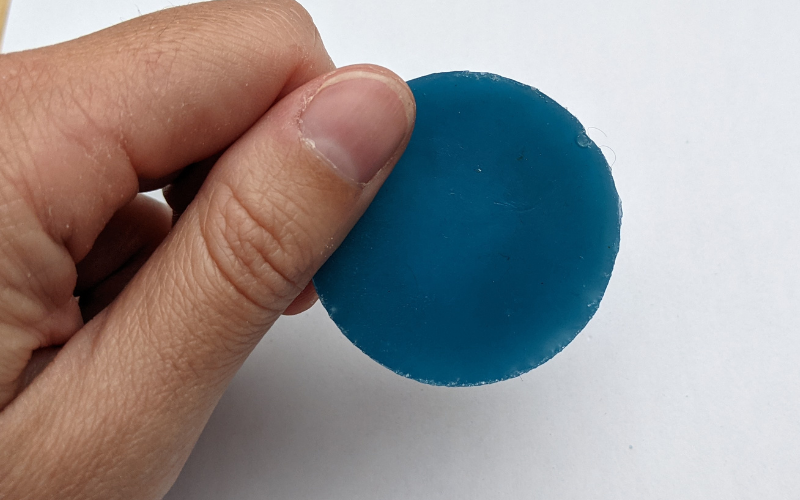
Burring
Burring is pretty smooth. The wax feels soft and you can burr into the wax quickly. You can remove a lot of wax fast.
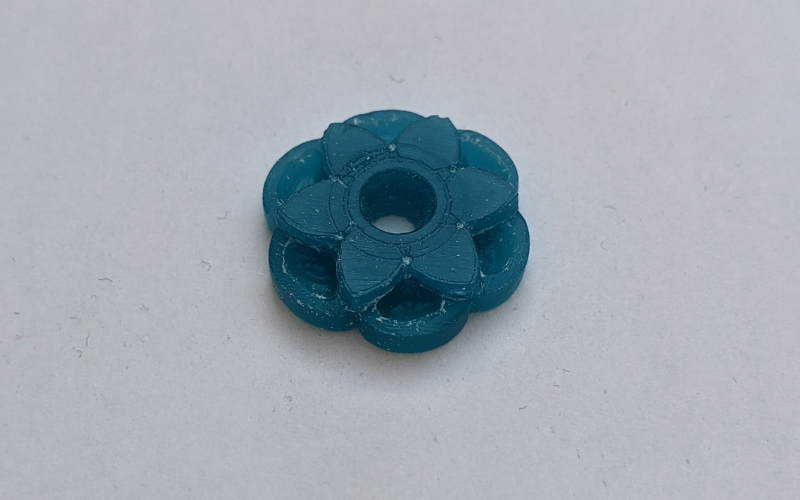
Because you can remove wax so fast, there is a chance of the burr digging into the wax. Just because you can go fast, doesn’t mean you want to. Slow down a little and you have more control over the burr.
Marking
Marking is ok. When I use the same amount of pressure as I normally do, the lines are very faint.
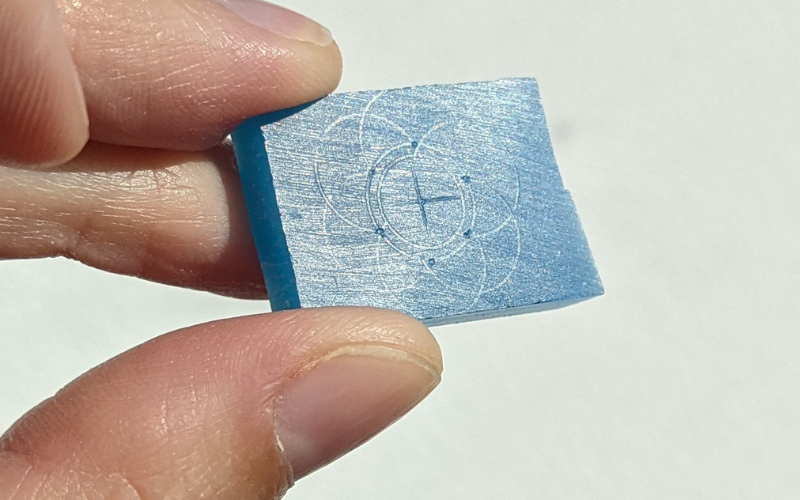
But when I use a bit more pressure, the lines come out clear.
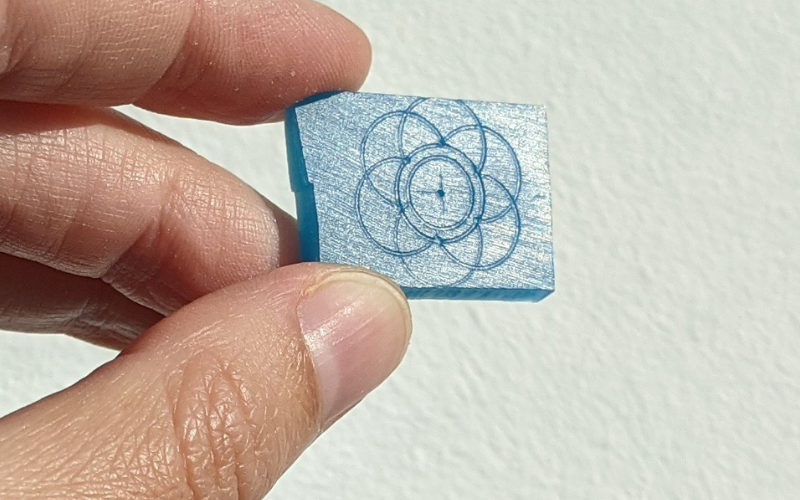
Wax dust clings to the edges of the marks, but you can brush these completely away with a toothbrush. That way, everything is clearly visible.
Stanley knife
A stanley knife doesn’t work well. You can remove thin slivers of wax without problem, but nothing more.
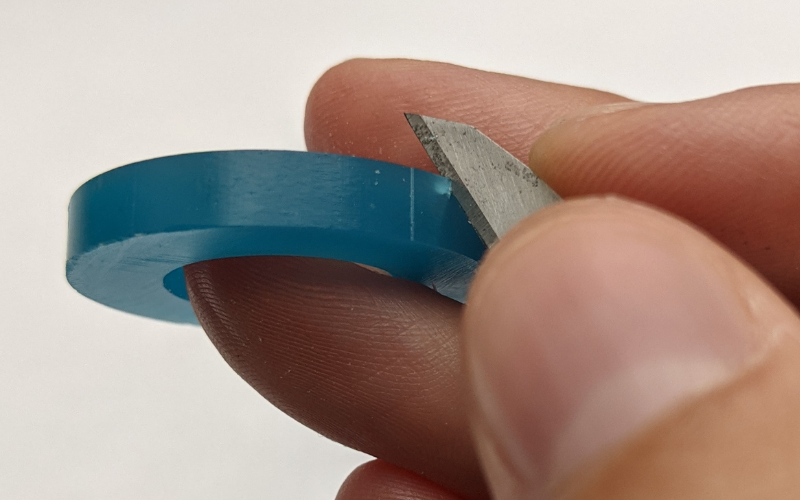
When you push the stanley knife in the wax, the cut continues to break away from the blade into the wax. You don’t control where the wax breaks and you don’t control what you remove from the wax
Misc
Ring sizing is super smooth! The ring carver carves the wax with almost no digging.
Verdict
The soft feel is both the best and the worst part of turquoise wax. It’s so easy to shape, but also so easy to dig in and leave marks. When you slow down and take your time, the wax is really great to work with!
Comment below and tell me your experience working with turquoise wax!